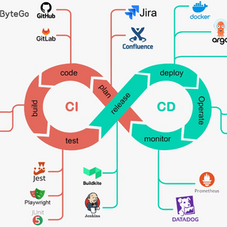
Unpacking the Layers: An In-Depth Look at the Docker Engine Architecture
Jan 26
2 min read
1
7
0
Docker Engine has become a cornerstone of modern software development, providing a reliable way to build, ship, and run applications in isolated environments. Understanding its architecture is key to leveraging its full potential.
In this post, we’ll explore the core components of Docker Engine and how they interact to provide a seamless container experience.
What is Docker Engine?
Docker Engine is a client-server application that enables you to manage and run containers. It uses a lightweight virtualization model, ensuring that containers are portable and perform efficiently.
Components of Docker Architecture
Docker Daemon (dockerd):
The Docker Daemon runs as a background process on the host machine.
It listens for Docker API requests and manages Docker objects like images, containers, networks, and volumes.
The daemon communicates with other daemons to manage Docker services.
Containerd
Containerd is an industry-standard core container runtime that manages the complete container lifecycle, including image transfer, container execution, and supervision.
It provides a robust API for managing containers and is used by various container orchestration systems, including Kubernetes.
As a component of Docker, containerd facilitates the efficient management of containerized applications in a lightweight and modular manner.
Docker CLI:
The Docker Command-Line Interface (CLI) is a user-friendly tool that interacts with the Docker Daemon.
The CLI translates user-friendly commands into HTTP requests that the daemon can understand.
It allows users to issue commands like docker run, docker build, and docker ps to control containerized applications.
REST API:
The Docker REST API provides a programmatic interface for interacting with the Docker Daemon.
Developers can use this API to automate tasks and integrate Docker into their workflows.

Workflow Example
A user runs docker run nginx using the Docker CLI.
The CLI sends a request to the Docker Daemon via the REST API.
The Daemon checks if the nginx image is available locally. If not, it pulls the image from a Docker registry (e.g., Docker Hub).
Once the image is available, the Daemon creates a container from it.
The containerized application runs in an isolated environment, with resource limits managed by the host OS kernel.
The user can view the container’s status using commands like docker ps or access its logs with docker logs.
Key Features and Benefits
Portability: Containers run consistently across different environments.
Lightweight: Containers share the host OS kernel, making them more efficient than traditional virtual machines.
Scalability: Docker's architecture supports seamless scaling of applications through orchestration tools like Docker Swarm and Kubernetes.
Conclusion
Understanding the Docker Engine architecture is crucial for leveraging its full potential. By breaking down its components and workflow, developers can better design, debug, and optimize containerized applications. Whether you're a beginner or an advanced user, grasping the inner workings of Docker Engine empowers you to build robust and scalable systems.






